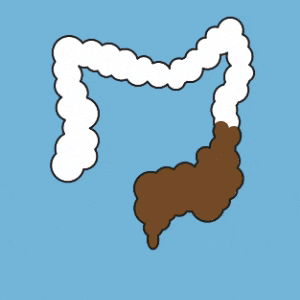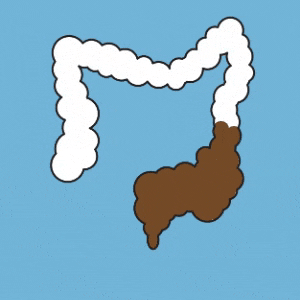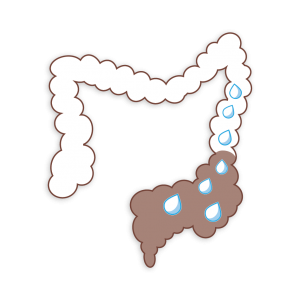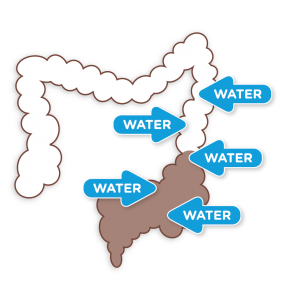
Pain down below is very common with constipation.
How often does your child go to the toilet? While there are no hard and fast rules for how often children should pass a stool, it is important to watch out for signs of constipation.
Constipation can be quite common in children. The causes are varied – some kids don’t get enough fibre in their diets, others simply forget to go to the toilet because they are too busy playing! There are medical conditions that can cause constipation, too. Whatever the cause, it’s important to treat constipation properly so that it doesn’t become an ongoing problem.
Stool softeners like Little Parachoc can help to empty your child’s large intestine and maintain regular bowel movements. By getting back into a regular rhythm, your child can stop worrying about number twos and enjoy their day again.
What is constipation?
First, let’s dispel a common myth. Just because your child hasn’t done a poo for a few days, it doesn’t mean they are constipated. Constipation is not just about how often your child passes stools. It can also be about how difficult or painful it is.
Constipation can occur when stools become hard and/or very large. As a hard stool builds up, the bowel is stretched larger than normal and its muscles can’t work properly to clear the contents. If the bowel is not emptied, the muscles can’t regain their regular strength and so constipation continues.
What are the signs of constipation?
Your child should be able to tell you – in a roundabout way, of course – that they have constipation. They might say, ‘My tummy hurts’. Or, ‘It hurts when I try on the toilet.’ Pain down below is very common with constipation. They might also resist going to the toilet because of the pain.
How can you help your child?
If you are worried about your child’s constipation, then your first port of call should be a healthcare professional, such as your family GP.
Your healthcare professional may recommend a stool softener like Little Parachoc. It works by gently lubricating the bowel wall and softening the faecal mass. This makes the stool easier to pass and helps children achieve a bowel movement.
As well as using a stool softener, you can also help by encouraging your child to sit correctly on the toilet, without distractions, a few times a day. Aim to get them to remain on the toilet for about five minutes. This can help to establish and maintain regular bowel movements.
Also take a look at your child’s diet. Are they eating enough high-fibre fruits and vegetables? Are they drinking enough water? A few adjustments to their daily food and fluid intake can also help to move things along.
| Stool softener | Osmotic Laxative | |
|---|---|---|
| How it works | Lubricant stool softeners like Little Parachoc contain non-absorbable oils which gently lubricates the bowel wall and softens faecal mass to make the stool easier to pass. |
Osmotic laxatives draw water from elsewhere in the body into the bowel to soften the stool to make it easier to pass. |
| Is it effective for constipation? | Stool softeners can be considered as a first line of treatment. Under the advice of a doctor or pharmacist, suitable for long term use. However, if excessive Little Parachoc is taken, leakage can occur and lead to oily/orange/yellow type substance in the underwear. Adequate dosage is one which produces one soft motion without leakage of liquid paraffin. Increase or decrease the daily dose in 5 mL graduations until desired effect is achieved. | Also can be considered as the first line of treatment for children’s constipation. However, can cause bloating and flatulence. |
| How it works |
| Stool softener Lubricant stool softeners like Little Parachoc contain non-absorbable oils which gently lubricates the bowel wall and softens faecal mass to make the stool easier to pass.  |
| Osmotic Laxative Osmotic laxatives draw water from elsewhere in the body into the bowel to soften the stool to make it easier to pass.  |
| Is it effective for constipation? |
| Stool softener Stool softeners can be considered as a first line of treatment. Under the advice of a doctor or pharmacist, suitable for long term use. However, if excessive Little Parachoc is taken, leakage can occur and lead to oily/orange/yellow type substance in the underwear. Adequate dosage is one which produces one soft motion without leakage of liquid paraffin. Increase or decrease the daily dose in 5 mL graduations until desired effect is achieved. |
| Osmotic Laxative Also can be considered as the first line of treatment for children’s constipation. However, can cause bloating and flatulence. |







